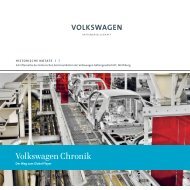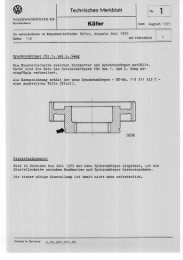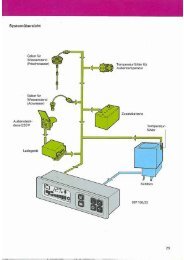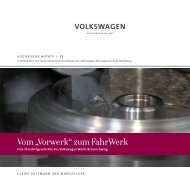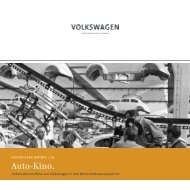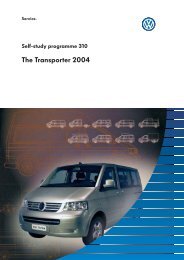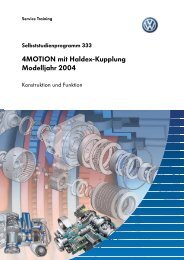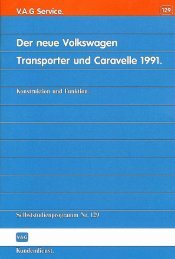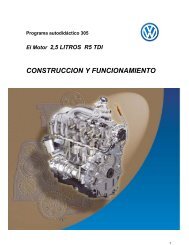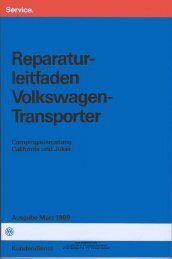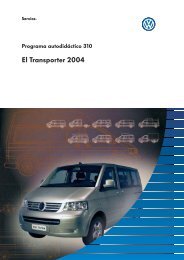HN 2: The British and their Works
HN 2: The British and their Works
HN 2: The British and their Works
You also want an ePaper? Increase the reach of your titles
YUMPU automatically turns print PDFs into web optimized ePapers that Google loves.
from abroad. <strong>The</strong> Volkswagen plant was able to take direct<br />
advantage of some of the export proceeds in the form of a<br />
discretionary export bonus which was in urgent dem<strong>and</strong>, for<br />
example for the importation of scarce materials. On account of<br />
the supply of sheet metal, <strong>and</strong> of dispensing with the equipment,<br />
this order could run more swiftly through production. <strong>The</strong><br />
provision of materials by the importer accounted for only a<br />
small part of the export proceeds. What was decisive for the<br />
assessment of this business remained, in Kemmler’s view, the<br />
currency gains to be achieved. 184 This trade presumably came to<br />
grief for the same reason which also caused the Electrobel deal<br />
to fall through. When the <strong>British</strong> officers visited the Belgian steel<br />
works, accompanied by representatives of the importer <strong>and</strong> of<br />
the Brussels government, it transpired that the works were<br />
already working flat out for the <strong>British</strong> automotive industry.<br />
<strong>The</strong>y therefore refused the government representatives’ request<br />
to supply sheet steel to Wolfsburg. 185<br />
Despite these setbacks the <strong>British</strong> military government stood<br />
by the decision, approved by London, to crank up Volkswagen<br />
saloon exports. At the end of July 1947 Hirst informed the factory<br />
management that the occupation requirements for vehicles<br />
were contracting, <strong>and</strong> would be covered by the end of the year.<br />
<strong>The</strong> car production capacities thus freed would be split equally<br />
between export <strong>and</strong> the German market, after the <strong>British</strong><br />
military government including REME had been supplied as a<br />
priority. However, Major Hirst strictly ruled out sales to the international<br />
black markets, on which the Volkswagen fetched<br />
between 20,000 <strong>and</strong> 30,000 Reichsmark. Hirst warned that this<br />
sort of business, while promising the highest dollar rates, would<br />
backfire in the long run. In agreement with the Joint Export<br />
Import Agency (JEIA), founded in Frankfurt following zonal<br />
amalgamation, the Board of Control favoured an export<br />
business via representative importers "on the basis of sound<br />
business principles, although this would mean correspondingly<br />
reduced currency proceeds". <strong>The</strong> <strong>British</strong> believed this was the<br />
only way to guarantee a sound, sustainable export business. <strong>The</strong><br />
JEIA was prepared to purchase material abroad in order to raise<br />
the quality st<strong>and</strong>ard in terms of paint finish, upholstery etc. It<br />
remained an open question to what extent the export bonus of<br />
10 per cent should be applied. <strong>The</strong> objections of the Ministry of<br />
Trade <strong>and</strong> Supply were stilled by restricting the use of the<br />
imported materials for export vehicles only. 186<br />
In the meantime, at the Volkswagenwerk, the preparations for<br />
the export business had begun. At a meeting with representatives<br />
of the Economic Administrative Office in June 1947, general<br />
manager Münch had received the official notification that the<br />
order for 1,000 cars for the French military government had<br />
been cancelled, <strong>and</strong> that instead 500 export vehicles were to be<br />
produced: 200 for Holl<strong>and</strong> <strong>and</strong> 300 for Belgium. Because the<br />
st<strong>and</strong>ard version of the Volkswagen did not meet the expectations<br />
of foreign customers in terms of equipment <strong>and</strong> appearance,<br />
the committee consisting of Paulsen, Striebig <strong>and</strong><br />
Feuereissen was asked to come up with suggestions for the<br />
development of an export model. Time was of the essence,<br />
because it was intended to present the Volkswagen at the forthcoming<br />
trade fair in Hanover. 187 Another key point was touched<br />
on by the factory management during a meeting in mid-July<br />
1947: the Volkswagen’s far from glorious past. After the occupation<br />
of half of Europe by the Nazis, its reputation as the<br />
"Führer’s" favourite toy could prove a millstone. <strong>The</strong> question



